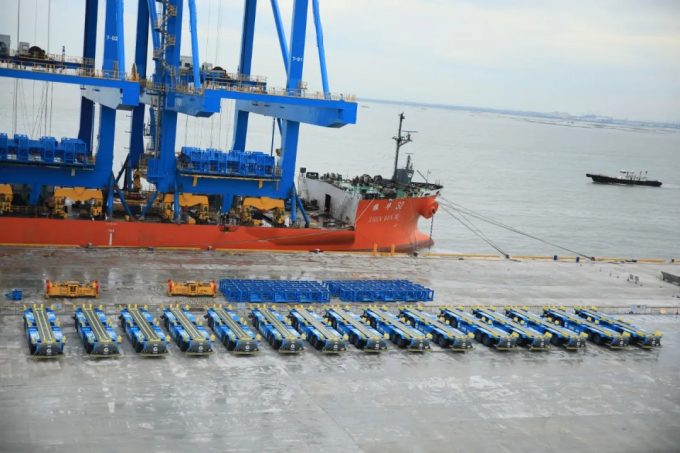Namsung offers intra-Asia intermodal solution to relieve capacity issues
South Korean intra-Asia carrier Namsung Shipping has introduced an intermodal service package, whereby shippers moving ...
LINE: EXPENSES AND OPERATING LEVERAGELINE: PIPELINE OF DEALS LINE: DEMAND PATTERNS LINE: LANDSCAPELINE: CONF CALL STARTSDSV: UNTOUCHABLEEXPD: NOT AS BULLISH AS PREVIOUSLYFWRD: SPECULATIVE RALLY MAERSK: INTEGRATED LOGISTICS WIN MAERSK: TRUMP TRADEKNIN: THE SLIDELINE: DEBUT AAPL: ASIA CAPEXDHL: THE HANGOVERXPO: ELECTION DAY RALLY BA: STRIKE OVER GXO: SHEIN AND TEMU IMPACT GXO: PAYING DOWN DEBT AND ORGANIC GROWTH
LINE: EXPENSES AND OPERATING LEVERAGELINE: PIPELINE OF DEALS LINE: DEMAND PATTERNS LINE: LANDSCAPELINE: CONF CALL STARTSDSV: UNTOUCHABLEEXPD: NOT AS BULLISH AS PREVIOUSLYFWRD: SPECULATIVE RALLY MAERSK: INTEGRATED LOGISTICS WIN MAERSK: TRUMP TRADEKNIN: THE SLIDELINE: DEBUT AAPL: ASIA CAPEXDHL: THE HANGOVERXPO: ELECTION DAY RALLY BA: STRIKE OVER GXO: SHEIN AND TEMU IMPACT GXO: PAYING DOWN DEBT AND ORGANIC GROWTH

China opened its first sea-rail intermodal container terminal on Tuesday, the first phase of Beibu Gulf Port Automated Container Terminal, spanning berths 7 and 8 in the Dalanping area of Qinzhou port.
The new terminal is part of the Belt and Road initiative and integral to the New International Land Sea Trade Corridor, which connects landlocked Chongqing by rail with Qinzhou in the west from where cargo can be shipped worldwide.
It is estimated that in the terminal’s first phase, annual capacity will be 1.02m teu; phase two, expected to be ready next year, will increase capacity to 2.62m teu with its two berths.
Beibu Gulf Port, which processed over 6m teu in 2021, is targeting annual handling of 10m teu by 2025.
The automated terminal is said to be the first of its kind, with a u-shaped process layout, enabling several tasks to be performed with minimal manpower.
The terminal uses automatic double-trolley quay cranes, reportedly at least 10% more efficient than conventional single-trolley units, while locally developed intelligent guided vehicles (IGVs) with cameras and sensors help carry containers between berth and storage yard. The IGVs can operate for four hours and require just 20 minutes of battery-charging time.
Guangxi Beibu Gulf Economic Zone deputy director Huang Wuhai said: “The terminal opening will significantly improve the capability and intelligence of Beibu Gulf Port, break the infrastructure bottleneck in ocean-going routes and help develop the New International Land Sea Trade Corridor.”
Comment on this article